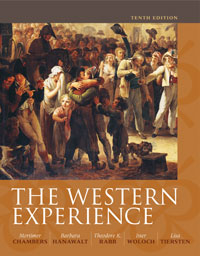1 A) 2,000,000 years ago. B) 1,250,000 years ago. C) 400,000 years ago. D) 40,000 years ago. E) 10,000 years ago. 2 A) get their food by hunting and gathering. B) divide some types of work between women and men. C) develop pottery and weaving. D) make paintings of wild animals. E) engage in territorial struggles over resources. 3 A) it supported a larger population. B) it encouraged new skills and specialties. C) it created the impetus to gain control over territory. D) it was the imperative step to be taken on the path to cities and civilization. E) it promoted the concept of male "father" deities. 4 A) the humans with sufficiently advanced brains were only found there. B) the region offered the necessary combination of animals for domestication and vegetables and cereals. C) the area's dry climate necessitated large-scale irrigation projects. D) the hills provided protection from less developed hunting and gathering peoples. E) the heavy annual rainfall meant extremely fertile soil. 5 A) the beginnings of government. B) the creation of laws and legal codes. C) complex social organization based on occupational specialization. D) the establishment of priesthoods. E) the end to the period of extensive reliance on slavery. 6 A) the rich alluvial plain supported an abundant agriculture. B) the lack of timber and stone forced it to develop trading to obtain these necessary materials. C) the region's isolation led Sumerians to see themselves as unique. D) vulnerability to floods and invasions created a strain of pessimism in Sumerian thought. E) it contributed to the idea of a patron god that either looked out for or punished by unleashing the forces of nature. 7 A) Sargon the Great. B) Gilgamesh. C) Ur-Nammu. D) Amorites. E) Hammurabi. 8 A) writing. B) mathematics. C) astronomy. D) monotheism. E) cuneiform. 9 A) the dependability of the Nile's annual floods and the equability of the climate contributed to Egyptians' optimistic attitudes toward life and death. B) the looming presence of mountains inspired the Egyptians to build great pyramids. C) the narrowness of the Nile valley and the presence of the river running through it contributed to early and strong political centralization. D) Egypt's isolation from other peoples allowed a long, generally unbroken development. E) it created the necessary conditions that allowed Egyptian kings to easily control their subjects. 10 A) domination of both the government and the economy by a god-king. B) notable political and social stability. C) the concept of "right order" reflecting the will of Aton, the supreme sun god. D) a rich literature including religious myths, instructions on how to get ahead, fables, and love poems. E) the establishment of three immense pyramids, tombs for kings, at Giza (now within the city of Cairo). 11 A) the Hyksos B) the Hittites C) the Hebrews D) the Hellenes E) the Amorites 12 A) the Hittites. B) the Babylonians. C) the Assyrians. D) the Mitanni. E) the Sumerians. 13 A) education offered the chance to rise through service in the government hierarchy. B) women had the right to own property, initiate legal action, and enter the priesthood. C) children were valued as security for the future. D) the economic difference between free citizens and slaves was vast. E) communication by ship was much faster than overland transportation. 14 A) establishing a centralized, sea-based colonial empire. B) reportedly sailing around Africa for the first time. C) creating the first phonetic alphabet. D) creating a sophisticated urban civilization. E) established a lucrative trade in the reddish dye called "purple." 15 A) traditions of strong tribal monarchy and national unity. B) belief in a single God and ethical laws. C) prophetic traditions of social criticism and moral reform. D) ideas of women's equality and the rights of children. E) an embrace of polytheism. 16 A) dominion over most of the Near East for a period. B) introducing Aramaic as a common language throughout their empire. C) creating magnificent works of art. D) eliminating rebelliousness among subject peoples. E) creating a society that embraced militarism. 17 A) shared the glory of conquering the Persians. B) left voluminous records of their daily life. C) divided the Mesopotamian territories of the Assyrians. D) cooperated in mammoth astronomical projects. E) rejected mathematics and astronomy as an affront to the gods. 18 A) a location in the Indian sub-continent. B) a language group. C) a civilization. D) a racial group. E) a powerful but mysterious empire in the Near East. 19 A) taught that the spirits of light, water, and earth had created the world. B) was not considered divine. C) create the most highly centralized state since the Old Kingdom of Egypt. D) taught a form of religion with a single divine force. E) brought about the reduction of religion as a major defining force in Persian life. 20 A) Cyrus. B) Darius. C) Cambyses. D) Nebuchadnezzer. E) Alexander.





